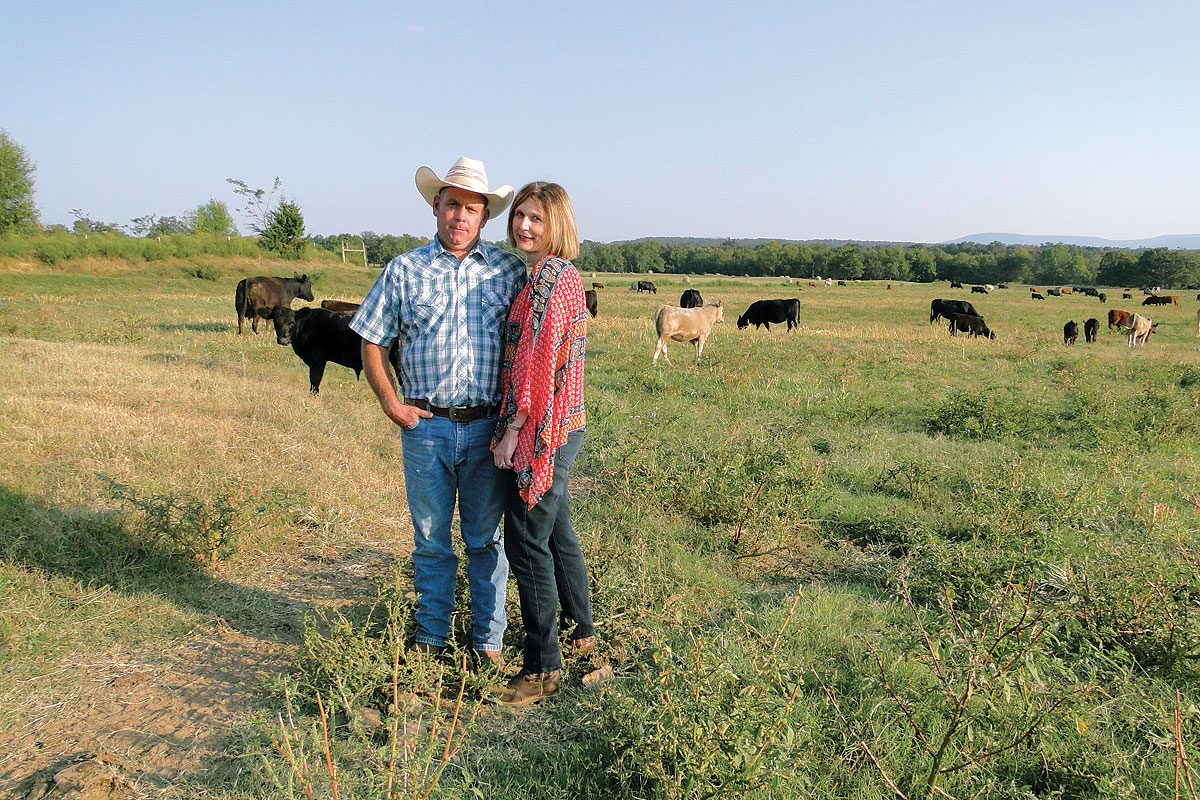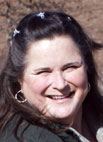
James and Judy Bell have not always been in the cattle business. In fact, James has a poultry science degree from the University of Arkansas and worked for Tyson Foods before becoming the U.S. division manager and eventually the president of Cobb Vantress. The couple had raised commercial Brangus cattle on and off while James was working, but after retirement, the couple took a new lease on life and began a registered Brangus herd, while also increasing the number of commercial cattle they had been raising on their 900-acre Rocking Bell Ranch.
“If I could have, I would have been in the cattle business all along,” James said. “We now have 150 registered Brangus cows and 150 commercial cows, and the pasture is where we love to spend our time.”
Judy said her husband treats their cattle business like his full-time job.
“He spends most of the day in the pasture with the cattle or in his office looking at paperwork and determining what our next step should be,” she said.
“She pretty much boots me out the door every morning at eight,” James said with a laugh.
James said he and Judy decided to raise Brangus cattle because of the breed’s low feed conversion and the quality carcass traits. James said he had also admired the breed for a long time.
The Bells started out breeding registered Brangus bulls to their commercial cows and realized the positive effects of the breed. The couple then decided to buy 24 cows and heifers from the Camp Cooley Ranch in Buffalo, Texas.
The also purchased five donor cows that were flushed and used to build a herd with quality genetics.
James said he has always been interested in introducing several genetic traits into his herd including good temperament, low birth weight, high weaning weight and good milking ability. He also breeds for cattle that are easy fleshing and can maintain their body condition on limited feed.
“Although Cobb Vantress is a poultry company, I still learned a lot about the role genetics play in the quality of any animal,” he said. “I hope to take the concepts we used to breed the best poultry we could, and apply them to produce the best cattle.”
James said he learned even more about using genetics in the cattle business when he and Judy attended the NCBA Cattlemen’s College in Reno, Nev., this past February.
“It’s always good to be able to hear the views of other people in our business and to learn of any new trends in the industry,” he said.
The couple continues to use a combination of natural and artificial insemination along with embryo transfer to breed their cows. James said the use of AI and ET helps accelerate the genetic process.
The Bells’ goal is to keep their birth weights between 75 and 80 pounds and their weaning weights around 625 pounds. James said they depend heavily on EPDs to determine which animals have a high possibility of producing these types of calves. He said they also utilize genetic markers to breed for certain characteristics in their cattle. Genetic markers allow producers to evaluate an animal and use the quality traits of the animal in breeding selection.
“We watch our EPDs in comparison to what is going on in our breed, and we have seen a positive correlation in relation to other producers,” he said. “We are especially excited about using genetic markers to improve selectability, carcass quality and feed conversion in our animals.”
As the Bells continue to improve the size and quality of their registered Brangus herd, they have started selling more and more cattle to other producers.
The couple sells its bulls and heifers private treaty and at consignment sales at the Vernon Suhn Ranch in Eureka, Kan., the Chimney Rock Ranch in Batesville, Ark., and at Camp Cooley.
The Bells are members of the International Brangus Breeders Association, the Arkansas Brangus Breeders Association and the Arkansas Cattlemen’s Association and have made several contacts through their involvement. James said that while they have sold many animals, they are still building their customer base.
“Our goal is to attract customers through word of mouth,” he said. “We aren’t trying to be the biggest; we’re just interested in producing high-quality animals that work in a variety of situations for a variety of different people.”






